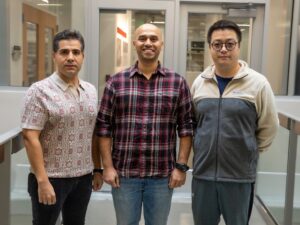
When you need a material with properties beyond those found in naturally occurring materials, you are looking for a metamaterial. These manufactured composites are designed at the micro/nano scale to manipulate various forms of waves in unique and useful ways. These unique properties have led to advancements in a wide range of fields including imaging, acoustics, energy harvesting, medicine, aerospace, and more.
The challenge with metamaterials is creating something with the specific properties you need. For decades, researchers have had to create a new material and then study the dispersion features, which is the way these materials interact with waves. Because these structures can behave in unique and counterintuitive ways, it isn’t always obvious up front what properties a newly designed material will have.
Researchers at the University of Utah have found a way to reverse this process: start with a set of desirable characteristics and then create a metamaterial that would have those features. This collaborative effort between researchers in the mechanical engineering and math departments at the U achieved this breakthrough by focusing on dispersion curves, an overall measurement of how waves propagate through a material. Their methodology starts with an arbitrarily drawn dispersion curve, which represents the desired properties, and then generates a design for a material to match.
Prior efforts to improve the process of creating new metamaterials focused on computer models that performed iterative searches. This had a high computational cost and met with limited success. This new method will offer much greater flexibility for creating these materials.
“This theoretical work lays the foundation for a myriad of new research directions in solid mechanics, structural dynamics, material design, and advanced manufacturing,” said ME assistant professor Pai Wang. “This disrupts three decades of paradigm in the research community by making it easier to create ‘designer materials’ that deliver desirable behaviors on-demand.”
To learn more, you can find the full paper in Physical Review Letters. While the initial study focused on discrete materials, the team expects that it can be extended to many other media. Co-authors of the paper include department of mechanical engineering graduate students Arash Kazemi, Fei Chen, and Yunya Liu, department of mathematics research professor Kshiteej J. Deshmukh, and mechanical engineering faculty professor Henry Fu and assistant professor Pai Wang.